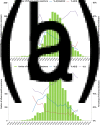Age-specific differences in influenza virus type and subtype distribution in the 2012/2013 season in 12 European countries
- PMID: 25648399
- PMCID: PMC4595855
- DOI: 10.1017/S0950268814003422
Age-specific differences in influenza virus type and subtype distribution in the 2012/2013 season in 12 European countries
Abstract
The epidemiology of seasonal influenza is influenced by age. During the influenza season, the European Influenza Surveillance Network (EISN) reports weekly virological and syndromic surveillance data [mostly influenza-like illness (ILI)] based on national networks of sentinel primary-care providers. Aggregated numbers by age group are available for ILI, but not linked to the virological data. At the end of the influenza season 2012/2013, all EISN laboratories were invited to submit a subset of their virological data for this season, including information on age. The analysis by age group suggests that the overall distribution of circulating (sub)types may mask substantial differences between age groups. Thus, in cases aged 5-14 years, 75% tested positive for influenza B virus whereas all other age groups had an even distribution of influenza A and B viruses. This means that the intepretation of syndromic surveillance data without age group-specific virological data may be misleading. Surveillance at the European level would benefit from the reporting of age-specific influenza data.
Keywords: Influenza; influenza (seasonal); respiratory infections; surveillance; surveillance system.
Figures


References
MeSH terms
LinkOut - more resources
Full Text Sources
Medical

